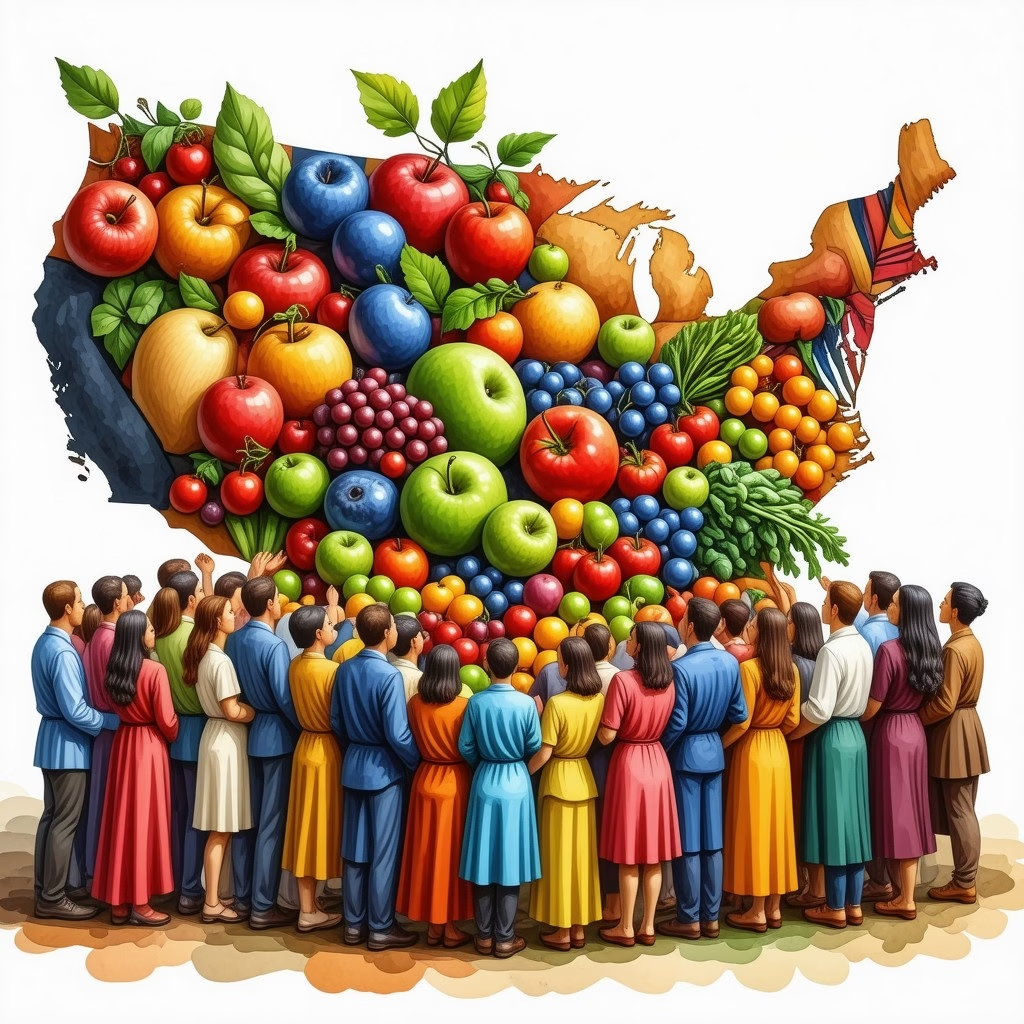Key Takeaways
- SNAP eligibility requires gross income to be at or below 130% of the federal poverty level (FPL) for your household size.
- Average monthly benefits for individuals can reach approximately $281, varying based on state and household circumstances.
- Households with higher income may still qualify for SNAP after allowable deductions such as housing and childcare expenses.
- Specific income limits differ by state; for example, Alabama and Nebraska have distinct eligibility criteria affecting gross income limits.
- To apply for SNAP benefits, individuals can complete applications online or in-person at local health services, ensuring all documentation is accurate.
Welcome to our comprehensive guide on the SNAP food stamp program, where we will unravel the intricacies of income limits, eligibility, and benefits associated with this vital assistance program. Understanding the SNAP program food stamps is essential for individuals and families seeking support in managing their food expenses. In this article, we will explore key topics such as the highest income thresholds to qualify for SNAP, the average benefits available per person, and specific eligibility criteria for states like Nebraska and Alabama. We will also address common questions, including whether Social Security counts as income for SNAP and what options exist for those earning higher monthly incomes. By the end of this guide, you will have a clearer understanding of how to navigate the SNAP program, ensuring you can access the benefits you may be entitled to. Join us as we delve into the details that can make a significant difference in your financial well-being.
Understanding SNAP Income Limits
The highest income to qualify for the Supplemental Nutrition Assistance Program (SNAP) varies by household size and is determined by the federal poverty level (FPL). As of 2023, the general guideline is that households must have a gross income at or below 130% of the FPL to be eligible for SNAP benefits. For example, the FPL for a household of one is approximately $1,133 per month, which means the gross income limit for SNAP eligibility would be around $1,477 per month. For a household of four, the FPL is about $2,339, making the gross income limit approximately $3,045 per month. It’s important to note that these figures can change annually, and individual states may have specific adjustments or additional criteria. To get the most accurate and up-to-date information, individuals can visit the USDA’s Food and Nutrition Service website or consult local SNAP offices.
Overview of SNAP Income Eligibility Criteria
To qualify for SNAP benefits, applicants must meet specific income eligibility criteria, which are primarily based on household size and income. The eligibility assessment considers both gross and net income. Gross income includes all income before any deductions, while net income is calculated after allowable deductions such as housing costs, childcare expenses, and medical expenses for elderly or disabled members. Understanding these criteria is crucial for those wondering, “if I make $1,800 a month can I get food stamps?” In many cases, individuals with a gross income below the established limits may still qualify after accounting for deductions.
How Income is Calculated for SNAP Benefits
Income calculation for SNAP benefits involves several steps. First, all sources of income must be reported, including wages, Social Security benefits, and any other financial assistance. Next, allowable deductions are applied to determine the net income. Deductions can significantly impact eligibility, making it essential for applicants to provide accurate information. For a detailed understanding of how to apply for SNAP benefits and the income limits involved, you can refer to the How to apply for SNAP benefits guide.
Understanding SNAP Income Limits
The Supplemental Nutrition Assistance Program (SNAP) provides essential food assistance to millions of Americans. To qualify for SNAP benefits, applicants must meet specific income eligibility criteria. Understanding these limits is crucial for those seeking assistance through the SNAP program.
Overview of SNAP Income Eligibility Criteria
To be eligible for SNAP, applicants must adhere to income and resource limits. Generally, gross monthly income must be at or below 130% of the federal poverty level. For a single-person household, this translates to an income limit of about $1,473 per month. If you are wondering, if I make $1,800 a month can I get food stamps? the answer is likely no, as this amount exceeds the income threshold for eligibility.
Additionally, applicants must also consider their household size, as this can significantly impact the income limits and benefit amounts. For more information on how to apply for SNAP benefits, visit the How to apply for SNAP benefits page.
How Income is Calculated for SNAP Benefits
Income calculation for SNAP benefits involves assessing the household’s net income, which is determined by deducting allowable expenses from gross income. Allowable expenses may include housing costs, childcare, and certain medical expenses. The SNAP benefits are calculated based on the Thrifty Food Plan, which estimates the cost of a nutritious diet.
As of October 2023, the maximum monthly benefit for an individual is approximately $281, but this can vary based on individual circumstances and state regulations. It’s essential to check with local SNAP offices or the USDA’s Food and Nutrition Service for the most current information regarding benefit amounts and eligibility criteria.
Eligibility Criteria for EBT in Nebraska
In Nebraska, the Supplemental Nutrition Assistance Program (SNAP), commonly known as the Electronic Benefits Transfer (EBT), provides assistance to low-income individuals and families to help them purchase food. To qualify for EBT in Nebraska, applicants must meet specific criteria:
- Income Eligibility: Households must have a gross monthly income at or below 185% of the federal poverty level. For example, as of 2023, this means a household of four must have a gross income of less than approximately $5,000 per month.
- Resource Limits: Households must have limited resources. Generally, the resource limit is $2,750 for most households, and $4,250 for households with a member who is elderly or disabled. Resources include cash, bank accounts, and certain vehicles.
- Residency: Applicants must be residents of Nebraska and provide proof of residency.
- Work Requirements: Able-bodied adults without dependents (ABAWDs) must meet work requirements, which typically involve working at least 20 hours per week or participating in a qualifying work program.
- Citizenship Status: Applicants must be U.S. citizens or meet specific immigration criteria. Non-citizens may qualify if they are lawful permanent residents or meet other eligibility requirements.
- Application Process: Interested individuals can apply for EBT benefits online through the Nebraska Department of Health and Human Services (DHHS) website or in person at local DHHS offices.
For more detailed information and to ensure compliance with the latest regulations, applicants can refer to the USDA Food and Nutrition Service guidelines.
Specific Requirements for Nebraska Residents
In addition to the general eligibility criteria, Nebraska residents must also consider specific requirements that may affect their application for EBT benefits. These include:
- Verification of Income: Applicants may need to provide documentation such as pay stubs, tax returns, or bank statements to verify their income.
- Household Composition: The size and composition of the household can influence eligibility and benefit amounts. It’s essential to accurately report all household members during the application process.
How to Apply for EBT in Nebraska
Applying for EBT benefits in Nebraska is a straightforward process. Here’s how you can do it:
- Online Application: Visit the Nebraska Department of Health and Human Services (DHHS) website to complete the online application.
- In-Person Application: You can also apply in person at your local DHHS office. Bring all necessary documentation to support your application.
- Follow-Up: After submitting your application, you may need to attend an interview or provide additional information to complete the process.
For further assistance, you can explore resources on understanding government assistance programs.
Alabama SNAP Income Guidelines
Understanding the income limits for the Supplemental Nutrition Assistance Program (SNAP) in Alabama is crucial for determining eligibility. These limits are updated annually and vary based on household size. In Alabama, the maximum income limits for SNAP are as follows:
- 1-person household: $1,473 per month
- 2-person household: $1,984 per month
- 3-person household: $2,495 per month
- 4-person household: $3,006 per month
- For each additional person: Add $511 to the monthly limit
To qualify, households must meet both gross and net income tests. The gross income limit is typically set at 130% of the federal poverty level, while the net income limit is 100% of the federal poverty level after allowable deductions. These deductions can include expenses for dependent care, medical costs, and shelter, which may significantly affect the net income calculation.
Additional Eligibility Factors in Alabama
In addition to income limits, several other factors can influence SNAP eligibility in Alabama. Households must provide documentation of income, expenses, and household composition during the application process. Furthermore, certain individuals, such as those receiving Social Security benefits, may have specific considerations regarding their income calculations.
To apply for SNAP benefits in Alabama, individuals can visit the official SNAP website or the Alabama Department of Human Resources (DHR) website. It is essential to stay informed about the latest regulations and income limits to ensure compliance and maximize benefits.
General Maximum Income Limits for SNAP
The maximum income to qualify for the Supplemental Nutrition Assistance Program (SNAP) varies based on household size and is determined by the Federal Poverty Level (FPL). As of 2023, households must have a gross monthly income at or below 130% of the FPL to be eligible for SNAP benefits. Understanding these limits is crucial for individuals seeking assistance through the SNAP program food stamps.
Comparison of Income Limits Across States
Income limits for SNAP can differ from state to state, reflecting local economic conditions and cost of living. For example, while the general guideline for a one-person household is $1,473 per month, states like California or New York may have slightly higher thresholds due to their higher living costs. Here’s a brief overview of income limits for various household sizes:
- 1-person household: $1,473 per month
- 2-person household: $1,984 per month
- 3-person household: $2,495 per month
- 4-person household: $3,006 per month
- 5-person household: $3,517 per month
- 6-person household: $4,028 per month
- 7-person household: $4,539 per month
- 8-person household: $5,050 per month
For households with more than eight members, add $511 for each additional person. It’s essential to check local SNAP offices or the Food Stamp Program – Benefits.gov for the most accurate and updated information.
Impact of Household Size on Income Limits
Household size plays a significant role in determining SNAP eligibility. Larger households have higher income limits, which can accommodate the increased cost of living and food expenses. For instance, a family of four can earn up to $3,006 per month and still qualify for SNAP benefits. This structure ensures that families with more members receive adequate support. Additionally, certain deductions may apply, which can affect the net income calculation, further influencing eligibility.
For more detailed guidance on how to apply for SNAP benefits and understand your eligibility, visit How to apply for SNAP benefits.
General Maximum Income Limits for SNAP
Understanding the maximum income limits for the SNAP program is essential for determining eligibility. The Supplemental Nutrition Assistance Program (SNAP) has specific income thresholds that vary by household size and state. These limits are designed to ensure that assistance is provided to those who need it most. Generally, households must meet both gross and net income limits to qualify for benefits.
Comparison of Income Limits Across States
Income limits for SNAP can differ significantly from one state to another. For instance, while the federal guidelines set a baseline, many states have their own adjustments based on local cost of living and other factors. To illustrate, a household of four may have a gross income limit of approximately $3,000 per month in some states, while in others, it could be lower or higher. It’s crucial to check your specific state’s guidelines to understand the exact limits that apply to you.
Impact of Household Size on Income Limits
Household size plays a critical role in determining SNAP eligibility. The larger the household, the higher the income limit. For example, a single individual may have a gross income limit of around $1,500, while a family of four could have a limit exceeding $3,000. This scaling ensures that families with more members receive adequate support. To find out the specific income limits based on your household size, refer to your state’s SNAP guidelines or visit the SNAP Program – USDA for comprehensive information.
What is the highest income to qualify for SNAP?
The Supplemental Nutrition Assistance Program (SNAP), commonly known as food stamps, has specific income limits that vary by household size and state. To qualify for SNAP benefits, your household income must be at or below 130% of the federal poverty level (FPL). For 2025, the FPL for a household of one is approximately $1,215 per month, meaning the maximum gross monthly income to qualify for SNAP is around $1,581. However, these figures can differ based on local guidelines and adjustments.
Understanding SNAP Income Limits
SNAP income eligibility is determined by both gross and net income. Gross income includes all income before any deductions, while net income accounts for allowable deductions such as housing costs, childcare expenses, and medical expenses for elderly or disabled members. Each state may have additional criteria that affect eligibility, so it’s essential to check local regulations.
How income is calculated for SNAP benefits
Income calculation for SNAP benefits involves several steps:
- Gross Income Assessment: This includes wages, salaries, Social Security benefits, and other sources of income.
- Net Income Calculation: After determining gross income, allowable deductions are subtracted to find the net income. Deductions can include a standard deduction, dependent care costs, and certain medical expenses.
- Household Size Consideration: The number of people in your household significantly impacts the income limits and benefit amounts. Larger households have higher income thresholds.
For more detailed information on how to apply for SNAP benefits, visit How to apply for SNAP benefits.




